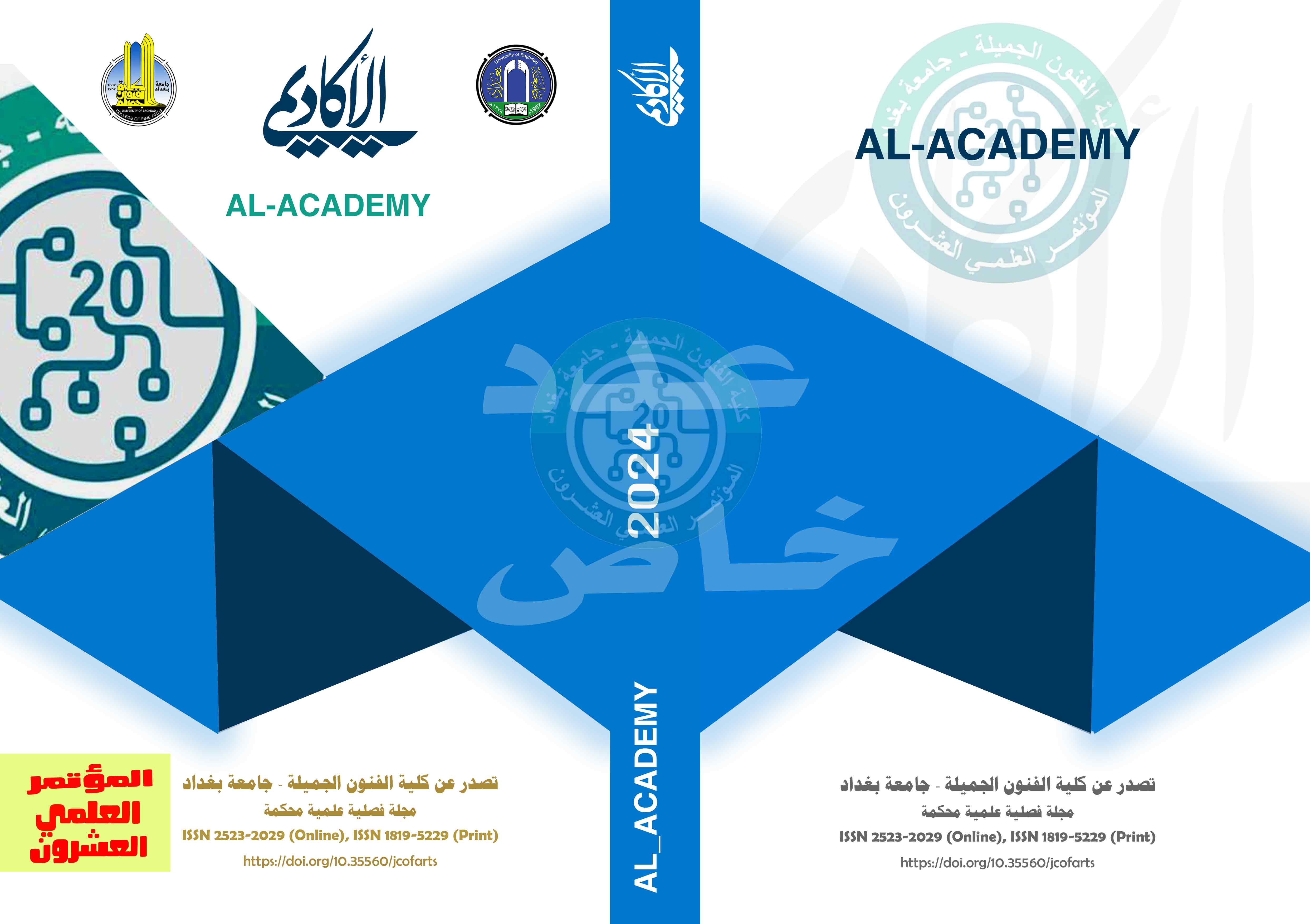Spatio-temporal connection of the event in heritage interior spaces
DOI:
https://doi.org/10.35560/jcofarts1426Abstract
Baghdad The historical event has a very important role and has a significance related to the determination of space-time as one of the basic factors for understanding design at the conceptual level, and the integration of design with a specific time and place helps in achieving balance and interaction between the elements within the space and enhances the understanding of identity and the general vision of the place, and from this point of view the research problem was the following question: "What are the mechanisms for achieving communication in historical spaces and what did the formation in them in space?" The objective of the research can be determined by: Detecting the internal spaces that witnessed historical events throughout modern local history, and finding design foundations to preserve these spaces, including their material and emotional connotations that achieve communication through their components, the current research included two sections, the first topic is communication through the components of the internal space, the second topic is the levels of achieving space-time communication in the internal space, while the researchers used the descriptive approach to analyze the research model in his research procedures for their compatibility with the requirements of his research and the achievement of the objectives, While the current research community included local heritage cafes in Baghdad, and a heritage café was chosen intentionally (Al-Zahawi Café Al-Rashid (The researchers prepared an analysis form and reached the most important conclusions: 1. The communicative dimension is the ways and means through which the design objectives of the café can be achieved,2. Space-time communication is the apparent verifier between the café and its users, and it appears through the extent to which the café's patrons accept and react towards the services and activities provided by the café
References
Abdel-Ahad, A. B. (2001). Variation of architectural images within the capabilities of place. Baghdad: un puplished Master’s thesis, University of Baghdad, College of Engineering.
Ahmed, M. (2001). Lover of Baghdad. Baghdad: Dar of General Cultural Affairs.
Al-Bayati, N. Q. (2012). rules and concepts of interior design. Diyala: Central Printing Press, University of Diyala.
Al-Bustani, B. ( 1970). Muhit Al-Muhit, V1. Beirut.
Al-Chadirji, R. (1995). Dialogue on the Structures of Art and Architecture. London/Beirut/Cyprus: Riad Al-Rayes Books and Publishing.
Al-Dawy, M. T. (2003). The Concept of Time and Space in the Philosophy of Appearance and Reality. Alexandria: Alexandria Knowledge Establishment.
Al-Imam, M. W. (2002). Transformations of Architectural Form. Baghdad: un published doctoral thesis, University of Technology.
Al-Jabri, M. A. (2010). Communication Theories and Applications. Beirut: Arab Network for Publishing and Research.
Al-Khatib, A. (2002). The human being in philosophy. Baghdad: Dar of General Cultural Affairs.
Al-Mousa, I. S. (1996). Introduction to Mass Communication. Jordan, Irbid: Dar Al-Kitabi Publishing House .
Al-Obaidi, J. a. (1989). Mass Communications. Mosul: Higher Education Press in Mosul.
Al-Ruwaili, M. S.-B. (2002). The Literary Critic’s Guide, 3rd edition. Casablanca: Arab Cultural Center.
Al-Takriti, I. A. (2002). The Dialectic of Communication in Contemporary Local Architecture. baghdad: Master’s thesis submitted to the Department of Architecture, University of Technology.
Aqeel, M. Y. (1988). Aestheticism between Taste and Thought. Baghdad: Salma Press.
Badawi, A. R. (1984). Encyclopedia of Philosophy. Beirut: Arab Foundation for Studies and Publishing.
Ching, F. D. (1997). Architecture : Form, Space .And Order. Van Nostrand : Reihold Co.
Faris, I. (2002). Language Standards. Lebanon: Dar Al-Fikr for Printing and Publishing.
Gannon, T., & Kipnis, J. (2003). Berand Tschumi Zenith De Rouen Rouen. new york: Berand Tschumi Zeprincetion architecture press.
Ibn Manzur, M. b. (1993).Ibn Manzur, Muhammad bin Dictionary of Lisan al-Arab, V 13. Beirut: Dar Sader for Printing and Publishing. .
Inaam Majeed. (2002). The Dialectic of Communication in Iraqi City Planning. Center for Urban and Regional Planning.
Jinan Abdel-Wahhab. (2000). The dialectics of communication in Iraqi architecture, an inductive study in Mesopotamian architectural styles. Baghdad: unpublished doctoral thesis, University of Baghdad, College of Engineering.
Krivish, S. (1986). (The Making of the Play), translated by Dr. Abdullah Al-Dabbagh. Baghdad: Dar Al-Ma’mun.
Moataz, E. g. (2004). Variables of Time and Place in the Structure of the Contemporary Poster. baghdad: College of Fine Arts, , Master’s Thesis (published).
Muslim, T. a. (2002). The Genius of Image and Place. Amman: Dar Al-Shorouk for Publishing and Distribution.
Radi Hakim. (1986). Susan Langer’s Philosophy of Art. Baghdad: Dar of General Cultural Affairs, Ministry of Culture and Information.
Roden, M. S. (1996). ANALOG AND DEGITAL COMMUNICATION SYSTEMS, Fourth edition. New Jersey, U.S.A: Prentice Hall.
Shaima Zaki, A. h. (2000). an analytical study of interior design treatments in theatrical performance spaces in Iraq. Baghdad: unpublished master’s thesis, University of Baghdad, College of Fine Arts.
simpson, j., & weiner, e. (2011). Oxford Dictionaries:Time. london: Oxford University Press.
Unwin, S. (1997). Analyzing Architecture. London: Routledge.
Webster, M. (1963). Webster’s Dictionary . london: G. Bell & Sons Ltd.














